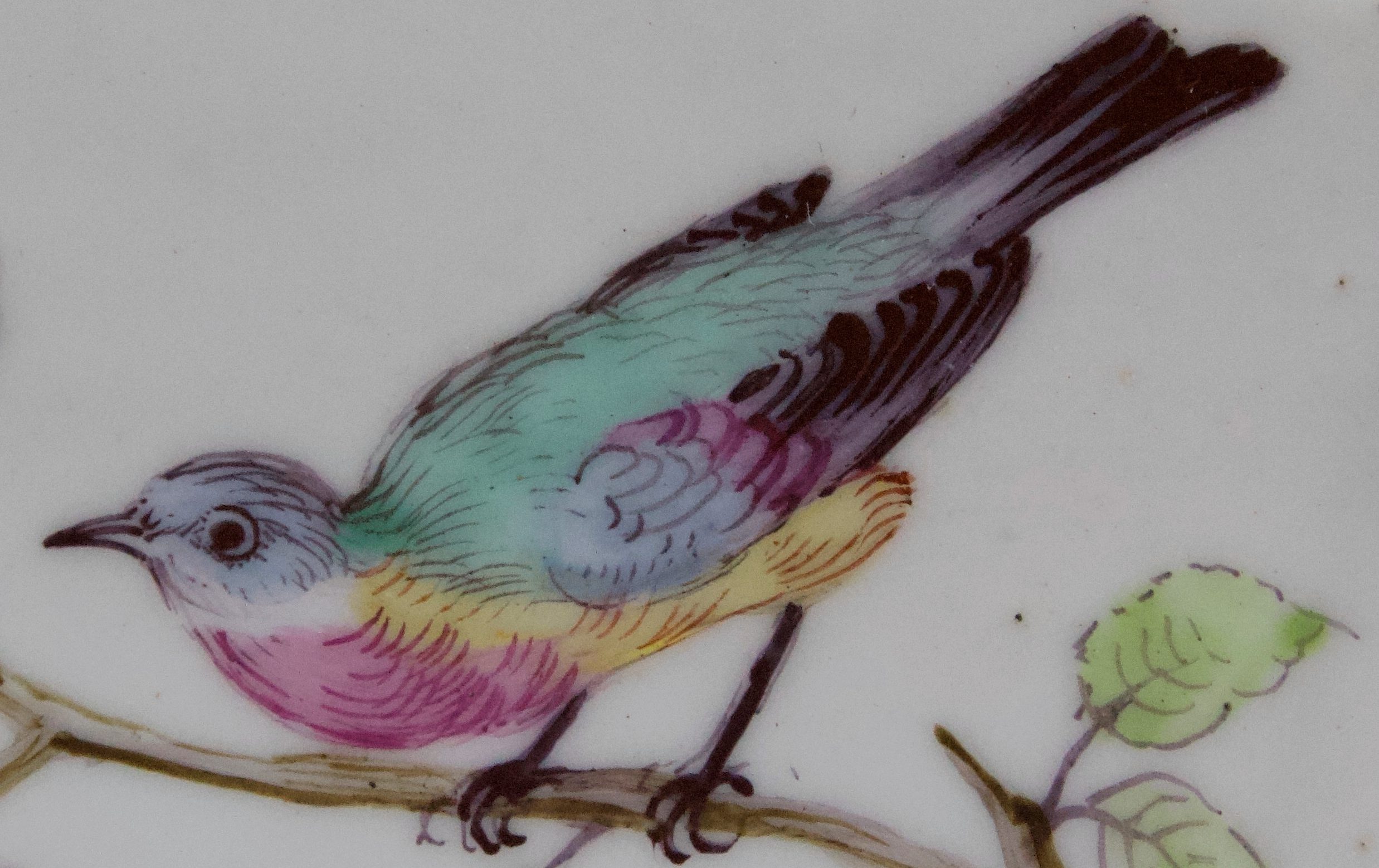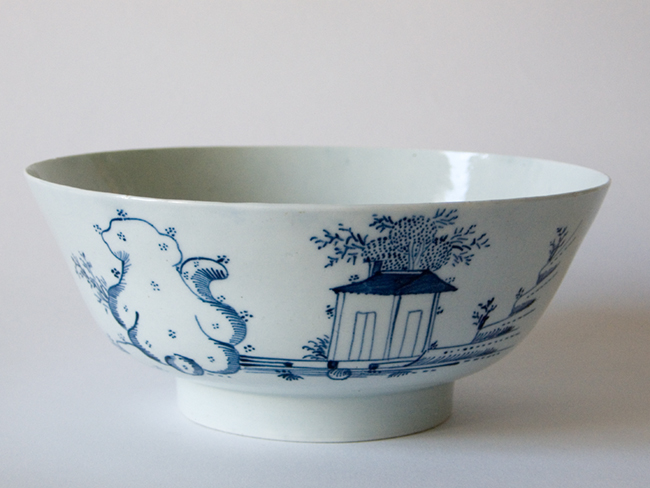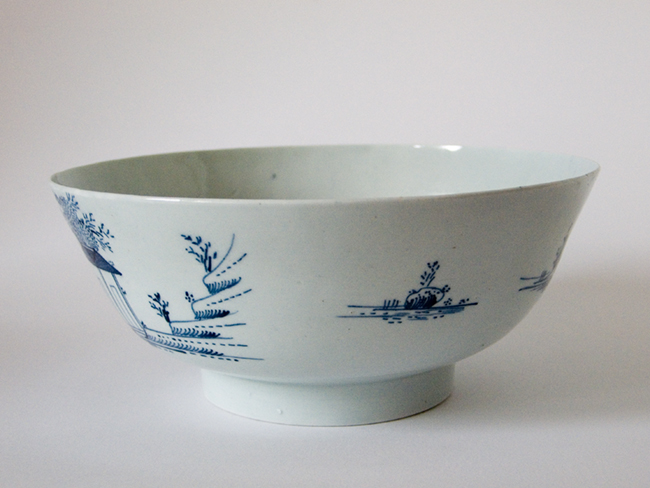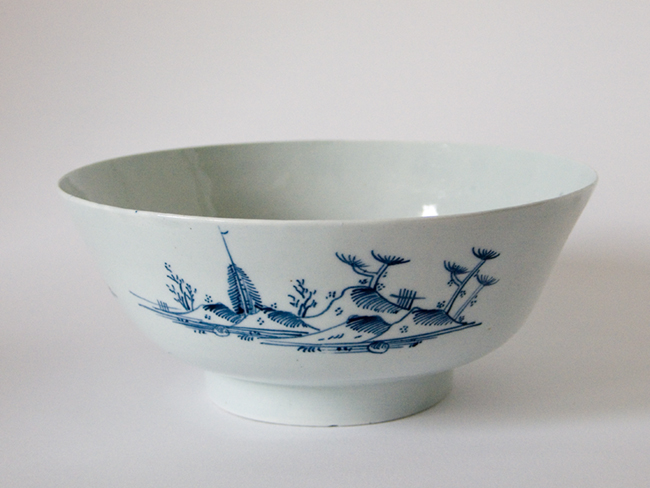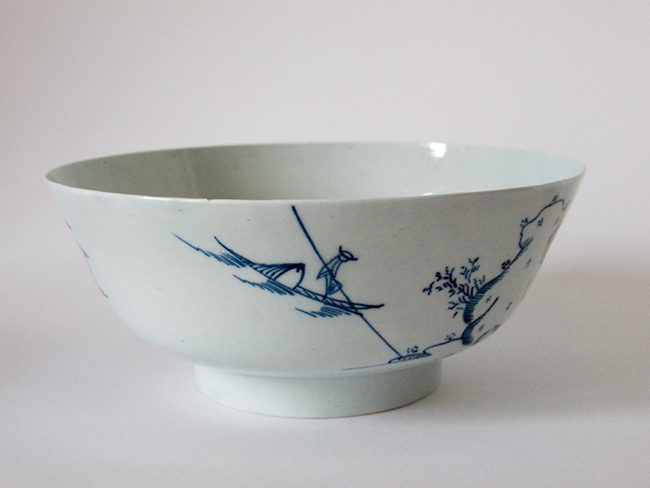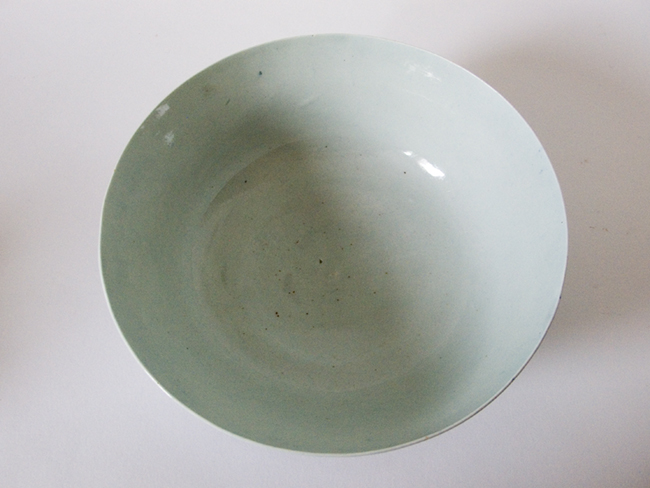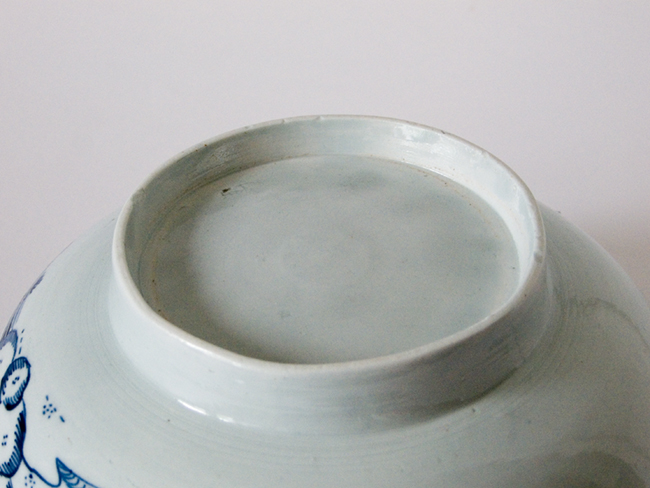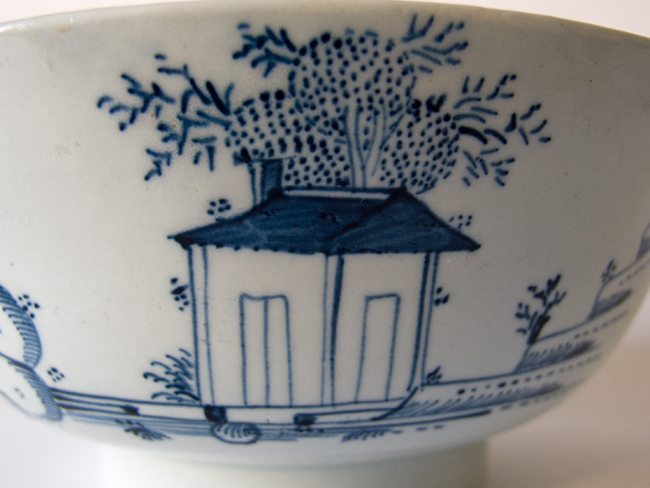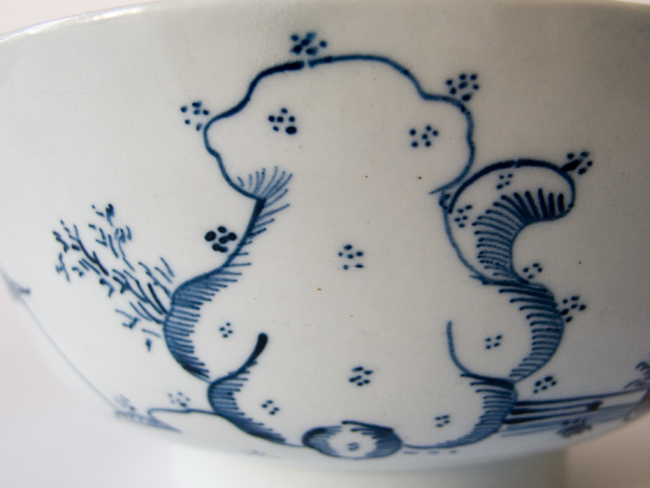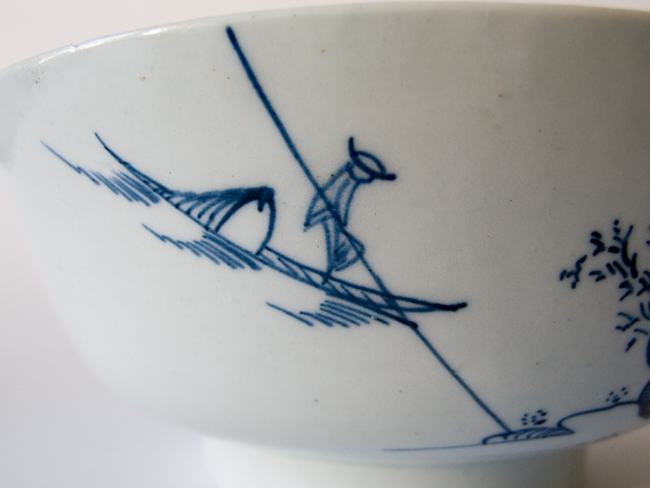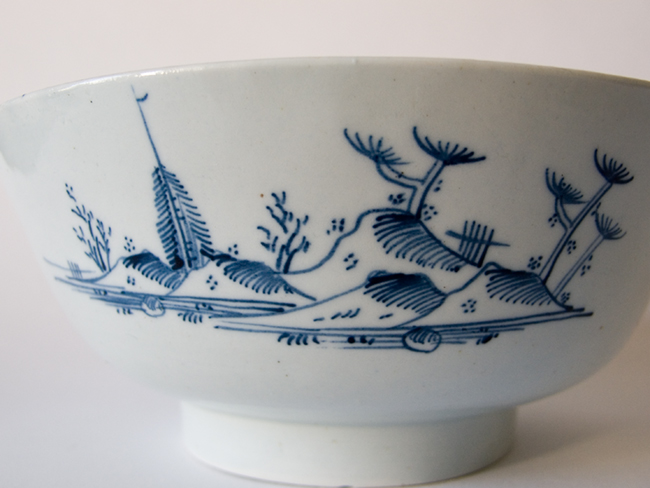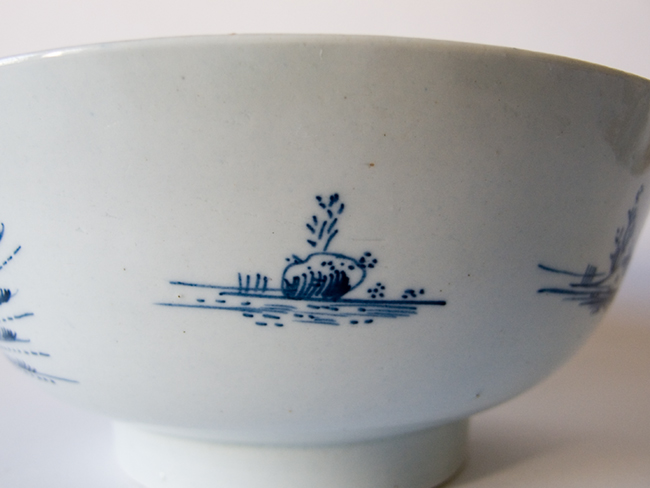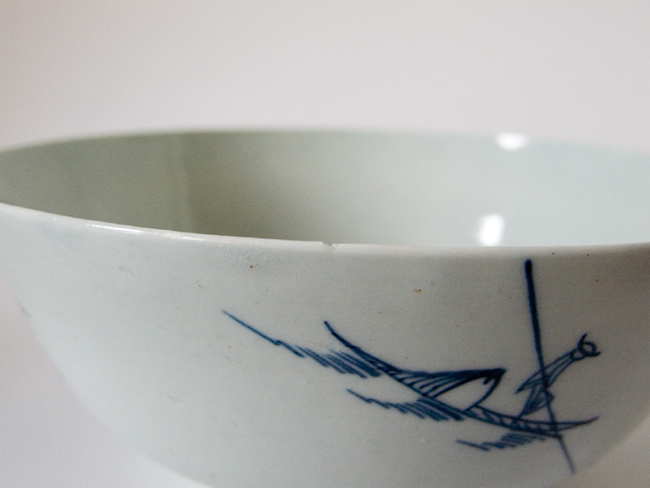A Richard Chaffers Bowl, circa 1758-60
This wonderful bowl is painted in underglaze blue with the so-called Triffid pattern. The thinly potted rim is incredibly fine, and the body a distinctive duck-egg blue. The translucency is tinged with green.
The pattern features a small riverside dwelling, next to which is a large organic structure, probably a fanciful rock. It is this element that gives the pattern its modern-day name. Other aspects of the painted design are the island covered in vegetation and a fisherman in a sampan. The pattern is at once detailed and naive, the artist having achieved this result with a combination of lines and dots from a simple brush or pencil stroke.
River and harbour scenes often occur on 18th-century Liverpool porcelain and delftware, no doubt due to the city’s location on the Mersey river.
The Chaffers manufactory produced some of the earliest porcelain in Liverpool, and his wares are particularly fine and collectable. On December 10th 1756, the following advertisement was placed in Williamson’s Liverpool Advertiser:
Chaffers and Co., China Manufactory. The porcelain or china ware made by Messrs. Richard Chaffers and Co., is sold nowhere in the town but at their manufactory on Shaw’s Brow; considerable abatement for exportation, and to all wholsesale dealers.
Condition: Perfect – no chips, cracks or restoration. Typical of early experimental porcelain production, there are minor firing and potting flaws in the form of a tiny frit to the rim, probably caused by an impurity in the clay, and fully-glazed slithers to the foot rim. The imaginative, detailed chinoiserie painted pattern is amongst the finest we have seen on underglaze blue decorated porcelain from this most notable of Liverpool manufacturers.
This bowl would enhance any collection of early English blue and white porcelain.
Dimensions: Height 6.6 cm; Diameter 15.9 cm
Liverpool Porcelain 1756-1804, Maurice Hillis (2011).
Liverpool Porcelain of the Eighteenth Century, Bernard M. Watney (Richard Dennis, 1997).
